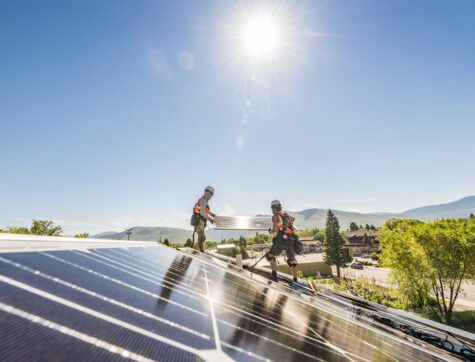Measuring Our Impact

In this story, we talk to Paul Herendeen, Director of Impact Market Development, about the focus of our very first Environmental Impact Assessment (EIA).
An important part of Clearwater’s commitment to values-based banking is understanding and taking responsibility for the environmental footprint of our business. In this story, we talk to Paul Herendeen, Clearwater Director of Impact Market Development, about the focus of our very first Environmental Impact Assessment (EIA)
What Does the EIA Measure?

The EIA measures the impact of business operations. It’s helpful to think about it in two parts. The first examines broad-scale impacts. For what we do, this mostly means greenhouse gas emissions and energy use. The second looks at local impacts including water use, solid waste generation, and air pollutant emissions. The assessment covers direct effects, things we do on-site, as well as indirect effects like corporate travel and employee commuting.
Read the Clearwater EIA and Management Plan
Environmental Impact Assessment
Read The AssessmentEnvironmental Management Plan
Read the Plan
Why is it Important?
Above all, it’s an important part of our commitment to transparency. Our members deserve to know how we impact the environment and what we do to minimize those effects. We also recognize that the first and most direct way we can become better environmental stewards is to analyze and address issues under our control. Carbon offsets have their place, but if, for example, we can simply use less energy and water during the average business day, we can make an immediate and tangible difference, lessening our environmental impact.
What are the Outcomes?
For measurement to be effective, it needs to be followed by action
Paul Herendeen

How does this help achieve our mission?
Our mission is to be a force for good in banking, in the communities we serve and in the lives of our members. Reducing our environmental footprint is good business, and we hope that our stewardship will educate and inspire our members, employees and fellow businesses to ensure that clean water, fresh air, and healthy wild places continue to define what makes Montana a special place to live and work.
This story was originally published December 10, 2018, and updated on September 18, 2024.


